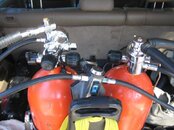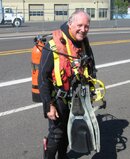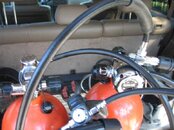I still prefer the term "redundant" rather than "backup" as both systems are being used simultaneously. In the event of a failure on one side, the other can be used without removing my mouthpiece simply by turning off the valve. And, according to the manufacturer and basic physics, air flow is potentially doubled into the second stage (not that I'm going deep, but that was the idea).John, what's the circular yellow thing next to your fins in the photo.
Redundant and redundancy typify the opposite meanings in the engineering environment I lived in. Redundancy is a backup system where redundant implies performing a function already served by another system and is by implication unnecessary. I never said it should not be used, only that there probably is a better choice of words, especially in an international forum where English isn't everyone's first language.
Back to that circular device...
If you'll look at this NASA website, they do use the word "redundant" quite often. I grew up with NASA, and was a USAF Pararescueman during the Apollo era. I was one of the rescue crewmembers on standby alert for the Apollo 13 mission, and if something would have happened within their first minute of flight, it would have been our mission. As it was, their emergency happened on the way to the moon, and they came back, landing in a different ocean than the one my squadron was covering.
SeaRat
Last edited:






